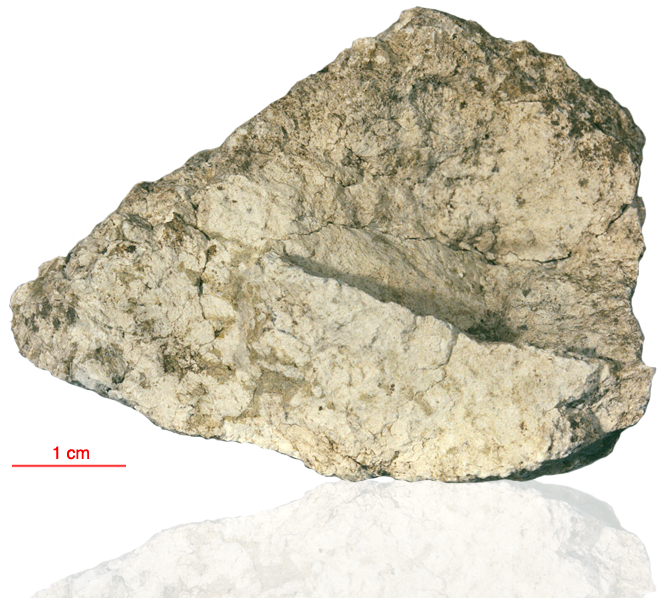
Fact sheet
62236 ia a chalky white slowly-cooled plutonic rock. It has subsequently been heavily shocked and has a cataclastic texture. However, it is lacking in any meteoritic component and is considered “pristine”. 62236 is a cataclastic mixture of troctolite, anorthosite and norite clasts. Original grain size is reported to be over 1 mm, but then shocked to 200-300 kilobars pressure, which has crushed and granulated portions of the matrix. The pyroxene in 62236 was originally pigeonite that has “inverted” to orthopyroxene with exsolved blebs of augite (rotation 1). This is thought to be indicative of very slow cooling.
The sample weighed 57.3 grams before analysis and has been dated at 3.93±0.04 billion years (Ar/Ar).
Further details of this and other Apollo samples are here: http://curator.jsc.nasa.gov/lunar/
The Apollo 16 landing site was in the hilly region around Descartes crater in the lunar highlands. The landing spot was chosen to allow the astronauts to gather geologically older lunar material (Descartes Formation and the Cayley Formation) than the samples obtained in the first four landings, which were in or near lunar maria.
The mission lasted 11.1 days, with a stay on the lunar surface of 71 hours. The crew were on the lunar surface for 20.2 hours during which they traversed approximately 27 kilometers and collected approximately 96 kilograms of samples.
Apollo 16 was launched on 16 April 1972.






